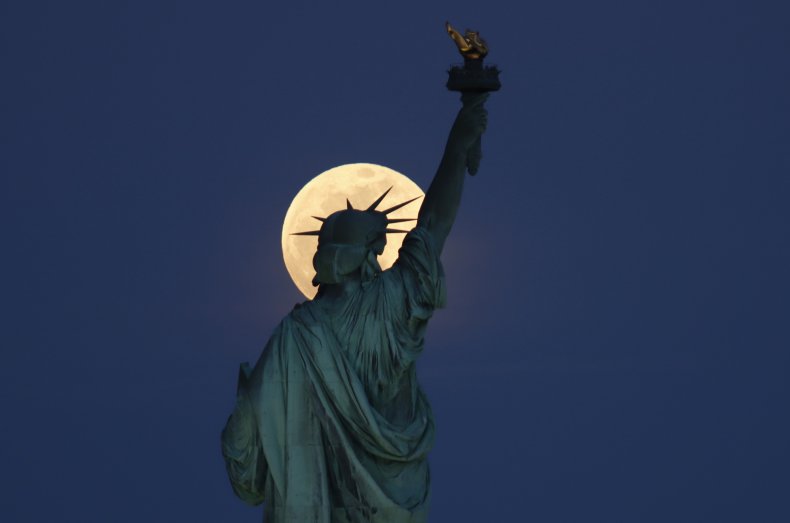Pink Moon Timelapse Video Shows Incredible Supermoon Rising Over Bridge
Footage of the first supermoon of 2021 rising over Newport Bridge in Rhode Island on Monday night has been captured in a breathtaking timelapse video. The 20-second clip filmed by Mike Cohea at Hodgkiss Farm in Jamestown shows the moon rising over the bridge and becoming brighter as the sky grows darker.
A supermoon occurs when the moon's orbit is closest to Earth at the same time as it is full, according to NASA. When the moon is at its closest point, it is said to be at the perigee—an average distance of around 226,000 miles from Earth.
When this happens, the moon is slightly brighter and larger than a regular full moon. Astrologer Richard Nolle coined the term "supermoon" in 1979 to describe this phenomenon. Nolle used it to refer to a new moon or a full moon that occurs when the moon is within 10 percent of the perigee.
Another supermoon will take place on May 26. This one will be slightly closer to the Earth than Monday night's moon, but only by 0.04 percent.
The April full moon is known as the pink moon in North America, but the name does not mean that the moon appears pink in color.
In the 1930s, the Maine Farmers' Almanac began publishing Native American names for the full moons, according to NASA.
The pink moon is named after the flowers of the moss pink—also known as creeping phlox, moss phlox or mountain phlox—which is native to the eastern U.S. and is one of the earliest widespread flowers of spring.
May's full moon is called the flower moon in North America.
The April full moon is known by various other names across the world, including the sprouting grass moon and the egg moon.
For Eastern Christianity, which celebrates Easter on May 2, this full moon is known as the paschal moon. For Hindus, it is Hanuman Jayanti, a festival celebrating the birth of Lord Hanuman. For Buddhists, especially in Sri Lanka, this moon corresponds with Bak Poya, commemorating when the Buddha visited Sri Lanka and settled a dispute between chiefs, avoiding a war.
Earth's moon is simply called "the moon" because we didn't know that other moons existed until 1610, when Galileo Galilei discovered four moons orbiting Jupiter.
The moon is the brightest and largest object in our night sky and is the fifth largest of the 190-plus moons orbiting planets in our solar system, according to NASA.


